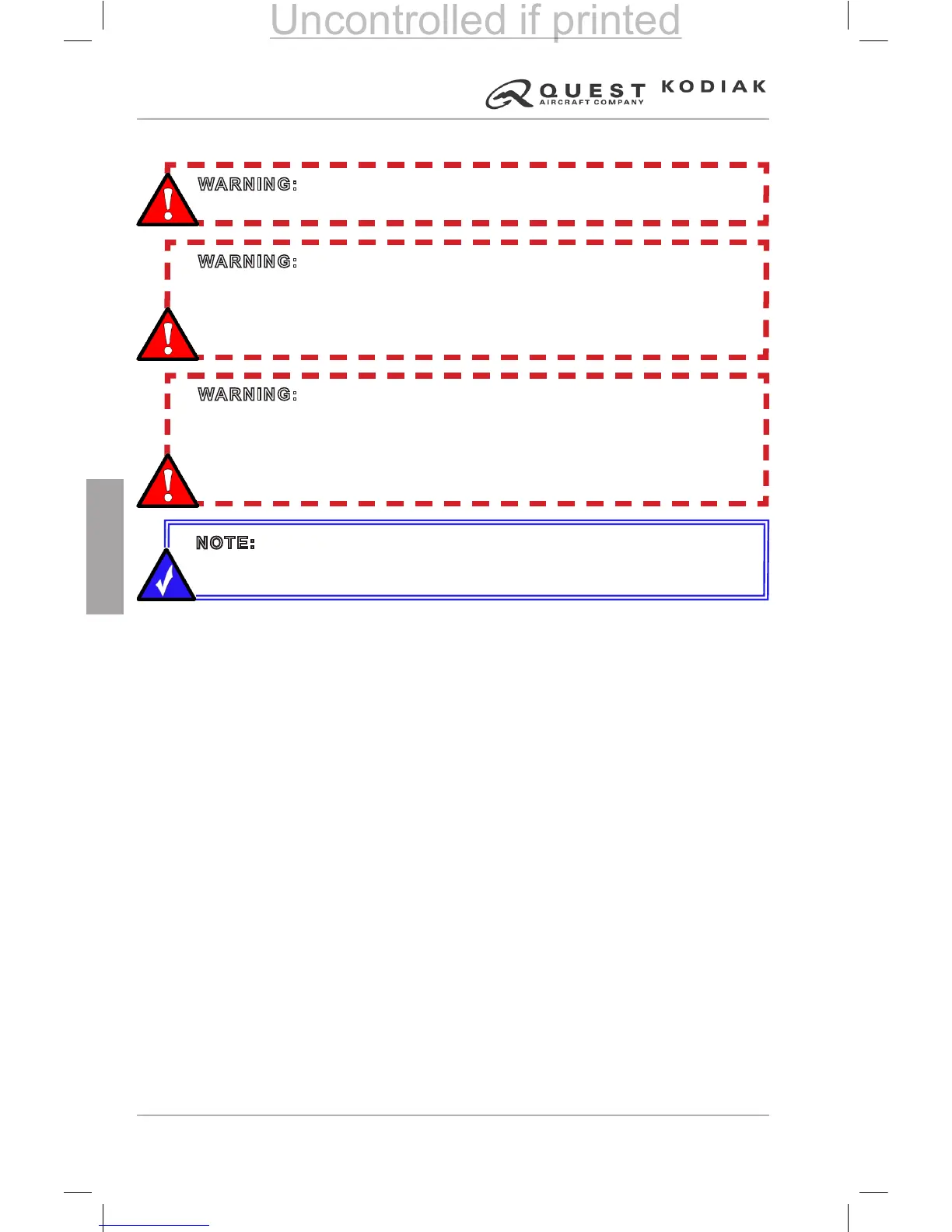9.4-4 NORMAL PROCEDURES
AIRSPEEDS FOR NORMAL OPERATIONS
En route Climb (Flaps Up):
Cruise Climb
.................................................................................. 115 KIAS
Holding:
Flaps 0°
.........................................................................................120 KIAS
Approach to Landing:
Normal Approach – Flaps 20°
.........................................................85 KIAS
Normal Approach – Flaps 0°
......................................................... 115 KIAS
Balked Landing/Go Around:
Takeoff Power – Flaps 20°
..............................................................85 KIAS
Takeoff Power – Flaps 0°
.............................................................. 115 KIAS
WARNING: Do not delay activation of the TKS Ice Protection System
with ice forming on the airplane.
WARNING: In order to minimize ice accumulations on the lower surface
of the wing, maintain a minimum airspeed of 110 KIAS with the aps up
during operations in icing conditions. If unable to maintain altitude at 110
KIAS and maximum continuous power, change altitude and/or course to
exit the icing conditions (while maintaining 110 KIAS minimum).
NOTE: If there is an inadvertent delay in activating the TKS Ice Protection
System, select MAX on the SURFACE/PROP switch until all ice is removed,
then select whichever mode is required to prevent ice accumulation.
WARNING: The efciency of the TKS system must be monitored. The
leading edge of the wing must be maintained free of ice during the system
operation. If icing is observed building on the leading edge of the wing with
the SURFACE/PROP switch in NORM position, change it to HIGH. If icing
is observed building on the leading edge of the wing with the SURFACE/
PROP switch in HIGH position, change it to MAX.
